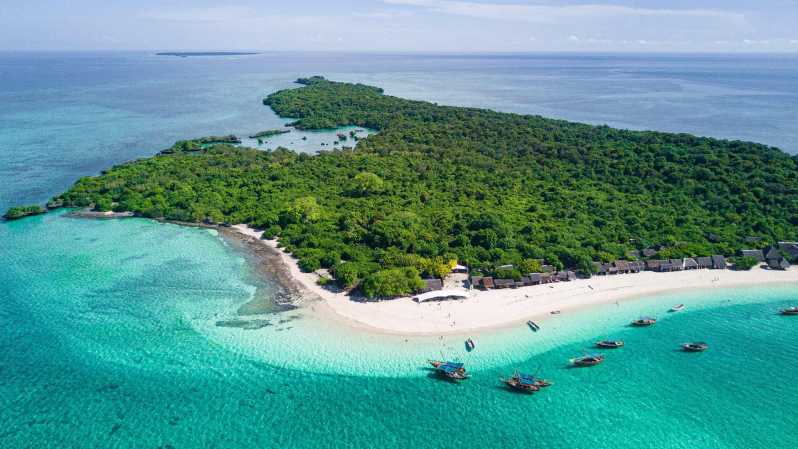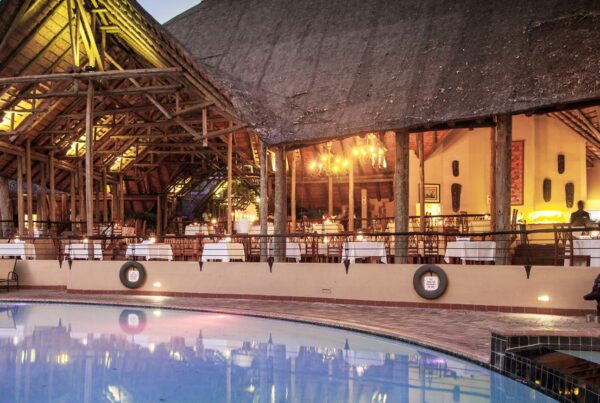Best Islands on the Coast of Tanzania: The Irresistible Allure of Tanzania’s Coastal Islands
The Tanzanian coast is not merely a meeting point between land and sea—it is a portal into another world, where turquoise waters kiss white sands under the shade of swaying palms, and centuries-old cultures still shape the rhythm of everyday life. Along this dazzling stretch of East Africa, a constellation of islands lies scattered across the Indian Ocean like polished jewels, each carrying a story told through coral stone ruins, dhow sails, clove-scented markets, and barefoot footprints in the sand.
To the uninitiated, these islands may simply appear as tropical escapes. But to the discerning traveler, they are sanctuaries of both natural and cultural richness—ancient trading posts, biodiversity hotspots, spiritual havens, and living archives of the Swahili Coast’s golden age. Whether seeking absolute solitude, underwater adventure, or immersive history, the islands off the coast of Tanzania invite one into a slow, sensual discovery of Africa’s coastal soul.
With landscapes sculpted by monsoons and histories shaped by Persian, Arab, Portuguese, and African traders, each island unveils its own unique identity. Some thrum with life and rhythm; others lull the spirit with silence and serenity. But all share one thing in common: they are places where time slows, where the world feels larger, older, and more beautiful than remembered.
Zanzibar: The Cultural and Historical Crown Jewel
No exploration of Tanzania’s islands can begin without acknowledging Zanzibar, the most renowned and historically significant of all. Known as the Spice Island, Zanzibar is not just one island but an archipelago, with Unguja (the main island) and Pemba forming its cultural core.
Zanzibar’s Stone Town, a UNESCO World Heritage Site, stands as a living monument to centuries of trade and cultural fusion. Narrow alleys echo with the calls of merchants and the laughter of children. Carved wooden doors mark centuries-old homes, and the aroma of cloves, cardamom, and cinnamon drifts through bustling bazaars. It is a place where Swahili, Arab, Indian, and European influences are woven seamlessly into the architecture, cuisine, and customs.
Beyond the town, Zanzibar transforms into a tropical dreamscape. Endless beaches—powdery white and lapped by clear blue waters—stretch along its shores. The eastern coast draws sunseekers and divers to places like Paje and Matemwe, while the north’s Nungwi and Kendwa pulse with beach bars, sunsets, and island energy. Offshore, coral reefs provide exceptional snorkeling and diving, revealing vibrant marine ecosystems teeming with angelfish, turtles, and dolphins.
Despite its growing popularity, Zanzibar retains its enchantment, not only in its natural beauty but in the feeling of walking through history, barefoot and unhurried, between the sand and the spice-scented air.
Pemba Island: A Lush and Mystical Escape
Floating quietly to the north of Zanzibar lies Pemba, Zanzibar’s lesser-known sister and a true hidden gem for those seeking solitude and raw beauty. Known as “The Green Island,” Pemba is defined by its undulating hills, fertile valleys, and dense clove plantations. While less developed than Unguja, this lack of commercialization is precisely what makes Pemba so alluring.
Here, ancient Swahili ruins are hidden in mangrove forests, and the rhythm of life flows slowly through fishing villages and unpaved paths. Pemba’s underwater world is equally mesmerizing, with some of East Africa’s most pristine coral reefs—dive sites like Misali Island are renowned for their crystal visibility and abundance of marine life, from reef sharks to manta rays.
Spiritual and mystical, Pemba is also deeply rooted in traditional beliefs, with local healers and practices still playing a significant role in community life. Visitors are often struck by its otherworldly energy, where every breeze through the trees feels steeped in legend. It is a place for the dreamer, the diver, the poet, and the seeker.
Mafia Island: The Untouched Eden of Marine Splendor
To the south of Zanzibar, one finds Mafia Island, a name that belies its quiet, untouched nature. As part of the Mafia Archipelago, this island stands as one of the most authentic and biodiverse marine destinations in Africa. Though its name might raise eyebrows, the origin lies in the Swahili phrase “mahali pa afya”—meaning “a healthy dwelling place”—a name that could not be more fitting.
Mafia Island is best known for its marine park, established to protect its rich coral reefs and underwater ecosystems. Divers and snorkelers from around the world are drawn here, particularly between October and March, when whale sharks grace the waters, gliding gracefully through the sea with prehistoric majesty. The coral gardens of Chole Bay are a riot of color and life, while the deeper channels invite more advanced dives.
Unlike its northern counterparts, Mafia is largely undeveloped, with sandy roads, small eco-lodges, and a vibe that feels entirely off-grid and grounded. Traditional dhows still sail by sunset, and islanders live much as they have for generations—through fishing, farming, and storytelling. For travelers in search of purity, wildlife, and peace, Mafia offers a retreat into the soul of the Indian Ocean.
Chumbe Island: A Conservation Success Story
Just off the coast of Zanzibar lies a speck of land that might be small in size but looms large in ecological importance. Chumbe Island Coral Park is a fully protected marine and forest reserve, a pioneering example of eco-tourism and marine conservation done right.
The island is uninhabited by permanent residents and accessible only to a select number of eco-conscious visitors each day. The coral reef sanctuary surrounding the island is considered one of the healthiest in the Indian Ocean, completely undisturbed by fishing or motorized boats. Snorkeling here reveals an underwater garden of rare coral species, reef fish, sea stars, and sponges in dazzling array.
On land, the island hosts a preserved coral rag forest and a population of coconut crabs, the largest land invertebrates in the world. Sustainability is not an option here—it is a way of life, woven into every aspect of the guest experience, from solar-powered lodges to composting toilets.
Chumbe is not for the mass tourist—it is for the traveler who values conservation, intimacy, and the power of simplicity. It is where one goes not to escape the world, but to understand how it can be better protected.
Bongoyo and Mbudya: Dar es Salaam’s Island Getaways
For those spending time in the vibrant city of Dar es Salaam, the nearby islands of Bongoyo and Mbudya provide an accessible and refreshing escape into turquoise waters and coastal tranquility. These small, uninhabited islands are part of a marine reserve just off the coast, reachable by short boat rides.
Despite their proximity to the city, both islands maintain a sense of isolation and natural beauty. White-sand beaches, clear waters, and coral reefs make them ideal for day trips focused on snorkeling, swimming, and sunbathing, while rustic beach huts and local seafood stalls offer simple island pleasures. There are no hotels or permanent settlements—just the rhythm of waves and the scent of grilled fish drifting through the sea breeze.
They may lack the grand narratives of Zanzibar or Mafia, but these islands hold their own magic—an urban exhale, a gentle pause where the pace of city life gives way to the embrace of the ocean.
Fanjove Island: A Private Island Dream Realized
If the idea of having an entire island to yourself feels like a fantasy, Fanjove Island makes that dream reality. Located off the coast near the town of Kilwa, Fanjove is part of a private archipelago and accessible to only a limited number of guests at a time. It is not merely a destination—it is an experience of exclusivity, solitude, and ecological luxury.
The island features only a handful of eco-bungalows built from sustainable materials, with open-air designs that let the sea breeze flow through untouched. The waters around Fanjove are home to dolphins, sea turtles, and even the occasional humpback whale during the migration season. Activities include snorkeling, kayaking, sailing, and stargazing on unpolluted skies.
Fanjove represents the pinnacle of barefoot luxury—where elegance meets isolation, and every detail honors the spirit of the land and sea. For honeymoons, celebrations, or soul-searching solitude, this is where the ocean whispers its softest secrets.
Explore the Islands of Tanzania with WildHorn Africa
To sail through the islands of Tanzania is to journey across history, culture, and pure natural wonder. Each island—whether bustling with heritage or cloaked in silence—offers a unique chapter in the story of Africa’s Indian Ocean coast, shaped by time, tide, and tradition. From the bustling spice-scented alleys of Zanzibar to the tranquil seascapes of Mafia and Fanjove, these islands are not just places—they are transformations in waiting.
To uncover their magic fully, travelers deserve a partner who understands the land, honors its culture, and curates experiences with depth and sensitivity. WildHorn Africa, with its expertise in personalized, eco-conscious African journeys, is perfectly poised to guide your adventure through Tanzania’s island treasures.
Whether you seek adventure or serenity, exploration or relaxation, let WildHorn Africa craft your perfect coastal escape—where the sands are soft, the sea is endless, and every journey begins with the tide.





 WildHorn Africa – Authentic and unforgettable tours across Africa, guided by local experts who know the land, wildlife, and culture best.
WildHorn Africa – Authentic and unforgettable tours across Africa, guided by local experts who know the land, wildlife, and culture best.


